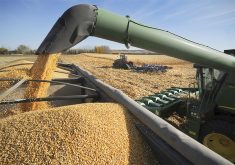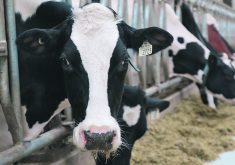Like much of the U.S. President Donald Trump administration’s efforts, the push to renegotiate the North American Free Trade Agreement was an exercise with much sound and fury but that failed to address the real challenges.
In agriculture, the United States forced Canada to make concessions in dairy, but I believe the positive impact on American dairy farmers will be minimal.
The real problems are that U.S. dairies are producing too much milk at a time when traditional domestic sources of demand are declining, international markets are promising but uncertain, and technology both in production and food production are altering the playing field.
Read Also

Critical growing season is ahead for soybeans
What the weather turns out to be in the United States is going to have a significant impact on Canadian producers’ prices
Gaining new access to another small slice of the Canadian market, which threatens the sustainability of supply management here, does not address these wider problems south of the border. So the sad case of smaller U.S. dairy farmers going under won’t stop.
And these milky waters are becoming increasingly turbulent for those who swim in them, regardless of their nationality.
A recent report by Cargill, The Shifting Global Dairy Market, noted that dairy use in the U.S. is still strong with 90 percent of households reporting milk consumption.
However, dairy consumption sagged from 2008-17 with per capita milk consumption down 14 percent, data from the U.S. Department of Agriculture shows.
Despite sagging domestic consumption, U.S. milk production climbed 13 percent in that same period. Milk production per cow rose 12 percent, from slightly less than 20,500 pounds per year to almost 23,000 lb.
Improved dairy genetics and better husbandry lifted production but at the same time an important percentage of U.S. consumers say they avoid dairy because they believe they are lactose intolerant or have dairy sensitivities or allergies, the Cargill report said. Some believe that plant-based food products are healthier and better for the environment than animal based products. As well, sincere but often misplaced worries about animal welfare cause some to avoid dairy products.
The increasing popularity of soy, almond and coconut alternatives, and the potential for scientists to perfect made-in-a-lab artificial proteins that mimic real dairy, have prompted cow milk producers in the U.S. and elsewhere to lobby their governments to disallow the makers of these products to use the word milk and other traditional dairy names on their labels.
At the same time, dairy producers, like other food growers, pay a check-off fee on their production to fund promotion efforts.
Part of the money goes to advertising and trade missions and some goes into helping processors find ways to add more dairies to the food they make.
Some consumers might opt for almond liquid on their cereal in the morning, but at the same time a whole lot of consumers absolutely love cheesy, buttery, creamy sauces and fillings. In the U.S., food scientists employed by dairy promotion authorities help fast food companies find ways to inject cheese into pizza crusts and taco shells and generally cram as much cheese as possible into food.
However, this comes with its own challenges as the industry around the world tries to find uses for the surplus skim milk that is the byproduct of making high fat butter and cheese.
And even with the popularity of cheese, American production is outstripping demand. The monthly USDA cold storage reports this summer showed cheese stocks among the highest ever recorded.
The U.S. industry also hopes exports can help address the surplus capacity and low or negative dairy farmer incomes.
In 2017, the U.S. Dairy Export Council (USDEC) and U.S. processors agreed to a plan called the Next Five Percent. The goal is to raise the amount of the U.S. milk supply exported to 20 percent from 15 percent.
Key to this is the hope that Chinese consumers’ growing interest in dairy products will cause that country to become a major importer.
Traditionally, Chinese people ate few dairy products, but increasing incomes and exposure to a wider range of international cuisines have raised consumption.
The USDEC notes that the Chinese import volume of cheese has soared more than 50-fold since 2000. It is already the No. 7 importer, and the USDEC expects it will become the top importer sometime in the next 10 years.
Of course, the other global dairy exporters — the European Union, New Zealand, Australia and Argentina — also know this, so they are competing hard for the business.
The weak domestic dairy prices in the U.S. helped its export sector achieve 20 percent year-over-year growth in the first half of the year, but now it faces headwinds as China and Mexico include tariffs on American dairy products in retaliation for the Trump administration’s tariffs on steel, aluminium and other products.
While some hope exports will return profitability to American dairy farmers, others think it is time to think about managing supply.
The recent Western Producer special report on dairy issues covered the efforts by Wisconsin farmers to start a national discussion about inventory control and the uphill battle they face in a country where most believe natural market forces are best at solving supply-demand imbalances.
And the market by nature is heartless, rewarding those large enough to implement efficiencies of scale and the latest technology and punishing the small unless they can find niche markets to exploit.
To sum up, the dairy industry, like many other industries, faces an environment of rapidly changing technology, consumer tastes and trade patterns.
President Trump might have declared USMCA an “especially great victory” for American farmers, but one battle does not win the war. The campaign for real sustainability will be a waged for years to come.

















